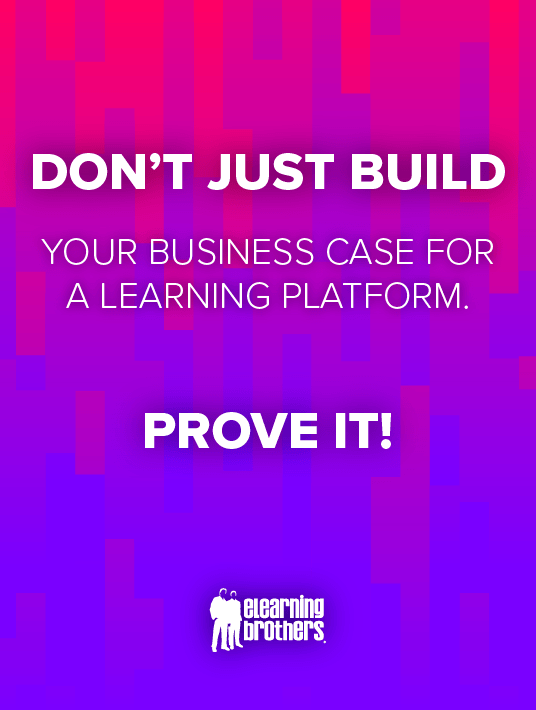How To Avoid The Common Learning Platform Buying Pitfalls
Any solid business case will, at a minimum, state the purpose and objectives of what is being proposed, provide justification, identify costs and expected return on investment (ROI), enumerate options considered and recommendations, call out risks and benefits, and support the argument with facts and numbers. But a compelling and successful learning platform business case is not a document, or, at least, not just a document. A compelling business case is a vision, coupled with evidence that provides strong indicators of success.

Typical Process For Buying & Implementing A Learning Solution
Here’s what a typical process looks like for buying and implementing a learning platform...
Someone in the organization comes up with the idea that you need an LMS, an LXP, or a digital learning platform—or that you need a new one. They start socializing the idea with colleagues and get buy-in from their manager to go ahead and put together a business case that can be presented for approval. Once approval has been secured, they initiate a search and a request for proposal (RFP) process to find possible learning platforms that meet their requirements. Vendors respond to the RFP, present demos of their products, and set up a limited trial or evaluation sandbox so the team can dive into the product for a hands-on experience.
Typically, by this point, the team will have narrowed down the list of possible vendor products to somewhere between one and three for evaluation. After spending time with each of these products they compare notes, select a winner, make a purchase, and move on to implementation.
Issues Surface During Implementation
Although the RFP and evaluation process does a decent job of screening out obviously bad investments you wouldn’t want to make, it doesn’t allow you to go deep enough nor sharpen your focus enough to see some of the critical things you need to experience BEFORE you make the purchase. Despite best efforts during the RFP and evaluation process, what often ends up happening is that some pretty big risks, issues, and problems surface during implementation. As in, after you've...
- Signed the contract.
- Made the purchase.
- Promised results.
- Already set things in motion in your organization for the rollout.
And you’re standing there… professionally exposed and vulnerable. All eyes are on you!
“Ok. You convinced us this is going to be the greatest thing since sliced bread. Let’s see it.”
Roadblocks Abound!
And then the bumps start, and the screeching, and things start to slow down and maybe even grind to a halt, just as you’re trying to take off and fly. What you thought would be a smooth 90-day progressive rollout starting small and scaling up, ends up being a 9-month nightmare, for you and your team.
You don’t look good, your team doesn’t look good, and nobody is getting the results they hoped for. At this point, you’re probably inclined to blame the vendor…
“They mis-sold us on a solution...or the product. They claimed it could do X, Y, and Z but it really can’t.”
Or maybe even your evaluation team... “They should have done a more thorough job during the evaluation.”
And you know what, a lot of times—all too often—that’s true. It is the vendor. It is the product. Your evaluation could have been more thorough. But, just as frequently, it’s issues in your own organization that come up— ones you didn’t even realize would be a problem.
For example:
- You didn’t identify or assign the right people for critical roles like technical administration; first-tier support for end-users in your organization; content management and creation; or reporting.
- You didn’t realize how long some of the work to stand up and prepare the system for rollout might take.
- No one ever tested whether or not that library of content—that you were expecting to build the foundation of your curriculum on—would successfully load into and function within the platform and provide the kinds of reports you assumed would be there.
In the end, it’s not the product or the vendor, but your readiness as a team— as an organization—to execute new processes and do jobs you’ve never done before. After purchase—during implementation and rollout—is not an ideal time to discover these kinds of issues.
Looking For Tips To Make A Successful Learning Platform Business Case?
Download the eBook Don't Just Build Your Business Case For A Learning Platform. Prove It! to learn how to take a new and improved approach to buying and implementation. This insightful guide shows you how to use a Proof of Concept to secure internal buy in.









